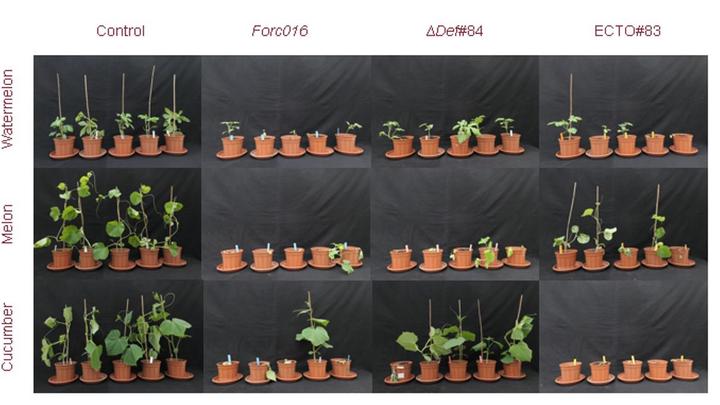Explore virulence factors in Fusarium oxysporum ff.spp. interactions.

Fusarium oxysporum, is a soil-borne fungus belonging to the Ascomycetes family. This fungus is an inhabitant of the soil and it enters the plants by the root to which will follow a xylem vessels colonization. However, it was observed that xylem colonization does not necessarily result in disease (Gao et al., 1995; Jimènez-Fèrnandez et al., 2013; Gordon, 2017). The deterioration of xylem tissue eventually results in reduced water flow through the vessels, causing the typical wilt symptoms observed in infected plants. Fusarium pathogen species trigger local PAMP triggered immunity responses which is suppressed by effectors secretion, which facilitates infection and concomitant wilt disease (de Sain and Rep.,2015 Di et al., 2017; Gao et al., 2019). In F. oxysporum individual strains only have limited host range, causing disease in one or a few related plant species (Edel-Hermann and Lecomte 2019; Michielse and Rep 2009; Di Pietro et al., 2003). Based on host specificity, F. oxysporum is classified into different formaaespeciales (ff. spp.) (Di Pietro et al., 2003) and according to a recent report, 106 different ff. spp. have been reported. Fusarium oxysporum f. sp. lycopersici (Fol) is one of the most studied and fourteen Secreted In Xylem (SIX) proteins have been identified in the xylem sap of infected tomato plants (Houterman et al., 2007; Schmidt et al., 2013). It has been observed that at least Six1, Six3 and Six5 contribute to virulence, since deleting each of these genes in Fol results in a significant reduction in virulence (Ma et al., 2015; Takken and Rep 2010). On the other hand, SIX4, SIX3 and S1, act as virulence proteins, as they are recognized by tomato resistance proteins, I, I-2 and I-3, respectively (Ma et al., 2015; Takken and Rep 2010). Surprisingly, all these SIX genes are located on one single chromosome, which is required for pathogenicity on tomato plants; hence is designated as the “pathogenicity chromosome” of Fol. SIX gene homologs have been commonly found in other ff.spp. of F. oxysporum (van Dam et al., 2016), for instance, homologs of SIX6, SIX9, SIX11 an SIX13 have been found in Forc016, and SIX6 contributes to virulence ion cucumber plants (van Dam, Fokkens, et al., 2017). In the last decade, other forma speciales have been extensively studied. To date we have information on F. oxysporum f. sp. melonis, f. sp. radicis-cucumerinum and f. sp. vasinfectum that can infect melon, Cucurbits and cotton, respectively. For all these different forma speciales, few effectors have been characterized and in depth studied. Additionally, comparative studies between F. oxysporum strains and other fungal species showed a marked gene flow (Shi-Kunne et al 2019 )Starting from these data, the aim of this project is to contribute to the characterization of the biological role played by effector p roteins produced by pathogenic fungi and to elucidate the mechanism of genomic evolution in Fusarium.